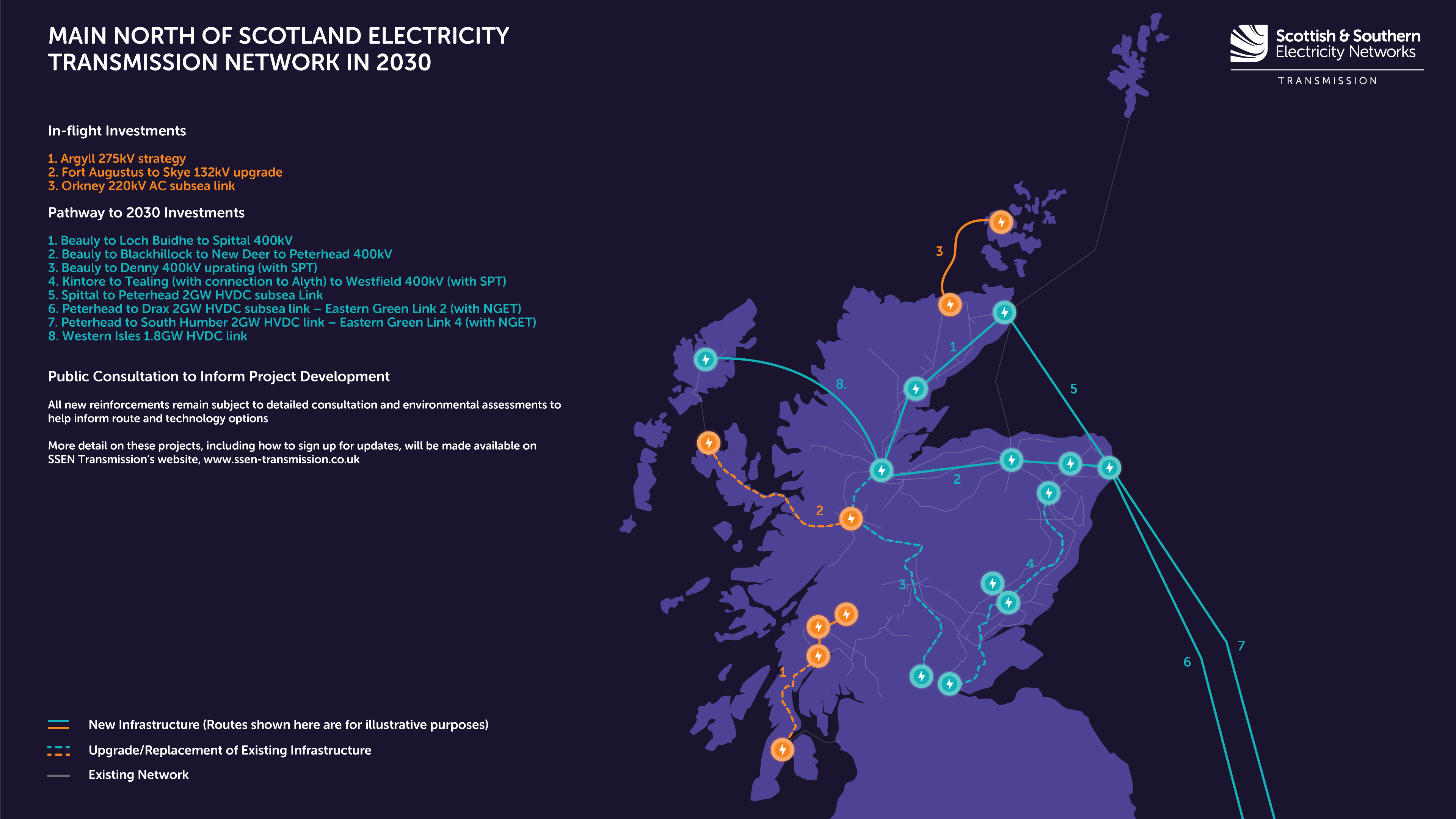The ‘Pathway to 2030’ sets the blueprint for the electricity transmission network infrastructure required to enable the forecast growth in renewable electricity across Great Britain. This includes delivering the UK and Scottish Government’s 2030 offshore wind targets of 50GW and 11GW respectively, making tangible progress towards net zero commitments.
The ‘Pathway to 2030’ includes:
- The Holistic Network Design (HND) which sets out the strategic network infrastructure to deliver 2030 offshore wind targets. This has been developed through the Offshore Transmission Network Review (OTNR), with the Electricity System Operator (ESO) working closely with SSEN Transmission and other GB Transmission Operators to deliver a more coordinated design, while ensuring an appropriate balance between environmental, social and economic costs.
- A refresh of the ESO’s recent Networks Options Assessment (NOA) report, which sets out the transmission network reinforcements which should receive investment. To read the the full publication please click here: The Pathway to 2030 Holistic Network Design | National Grid ESO
Major projects included in the ‘Pathway to 2030’
For the north of Scotland, this confirms the need for over £7bn of investment in onshore electricity transmission infrastructure, with the following reinforcements required to deliver 2030 targets, several of which will require accelerated delivery to meet 2030 connection dates:
- Two 2GW subsea high-voltage direct current (HVDC) links from Peterhead to England, both of which will be taken forward as joint ventures with National Grid Electricity Transmission (NGET);
- A 2GW subsea HVDC link from Spittal in Caithness, connecting to Peterhead;
- A 1.8GW subsea HVDC link from Arnish on the Western Isles, connecting to the north of Scotland mainland;
- 400kV onshore reinforcements, between Beauly, Blackhillock, New Deer and Peterhead; between Beauly, Loch Buidhe and Spittal; and between Kintore, Tealing and Westfield;
- Uprating the existing Beauly to Denny line to enable 400kV operation on both circuits;
- A new HVDC Switching Station at Peterhead, which will help reduce the number of HVDC and Convertor Stations required for future HVDC links, reducing costs and minimising community and environmental impacts.

Further investments will be needed to realise ScotWind’s full ambition, with the ESO expected to publish a second HND in Q1 2023 setting out the additional network reinforcements required.
This investment in the transmission network in the north of Scotland will play a critical role in achieving Net Zero targets, improving security of supply by reducing volatility and reliance in an increasingly volatile wholesale markets and will provide significant economic and employment opportunities. SSEN Transmission is committed to maximising these opportunities, unlocking new green jobs across the north of Scotland through our own recruitment, the supply chain and the wider economy as we deliver these infrastructure requirements.
Detailed Network Design
The publication of the ‘Pathway to 2030’ will be followed by the Detailed Network Design (DND) stage and consenting process, which SSEN Transmission will deliver in the north of Scotland. This stage, which will involve the planning and development of these projects will be subject to extensive consultation and stakeholder engagement with communities, landowners and local authorities to help inform design, technology solutions and route options. For each project, a range of assessments will be undertaken to help inform potential sites and routes, taking into account environmental, engineering and economic factors that we will closely consider.
Keep in touch
If you would like to be kept updated on the Pathway to 2030 projects, please send an email to: Transmission.Stakeholder.Engagement@sse.com